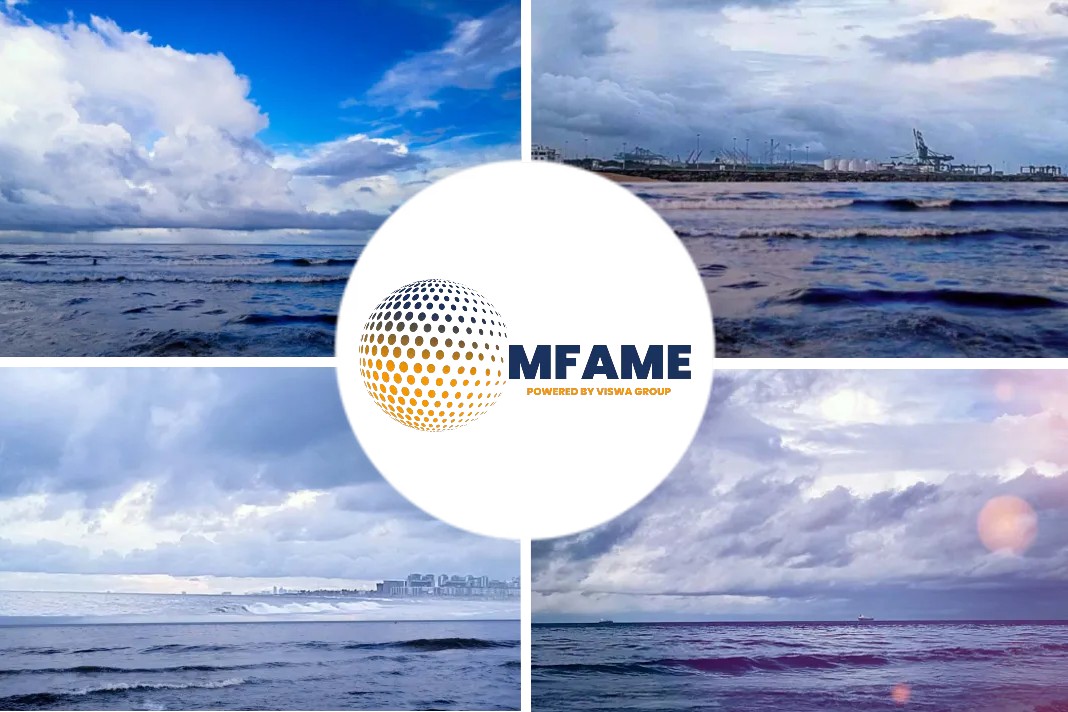The biggest challenge facing the global shipping industry in reducing carbon emissions is the higher price of low carbon fuel alternatives compared to heavy fuel oil, Roel Hoenders, Head of Air Pollution and Energy Efficiency at International Maritime Organization (IMO) told Al Arabiya.
Decarbonization to combat climate change
The shipping industry accounts for around 80 percent of global trade and around three percent of global carbon emissions, Reuters previously reported. Decarbonizing the shipping industry will be a key step in fighting climate change but increasing the affordability of new fuels entering the global shipping market is key, Hoenders explained.
“The big challenge we are facing today is the substantial price difference between heavy fuel oil, which is relatively cheap and available everywhere around the world, and these low carbon fuel alternatives. This price gap needs to be bridged,” Hoenders said in an interview with Al Arabiya’s Naser El Tibi.
In addition to turning to less-carbon intensive fuels, Hoenders said it is important that total lifecycle greenhouse gas emissions are also taken into account. Hydrogen, for instance, is already expected to play an important role in future decades as part of the global energy transition, but variations exist in how it can be produced.
One example: “Grey hydrogen,” which is created by splitting methane gas with waste products then expelled into the environment. Methane is a greenhouse gas (GHG), and its distribution into the atmosphere can accelerate climate change.
For all the latest headlines follow our Google News channel online or via the app. “A market base measure which gives a clear economic incentive together with carbon pricing could really incentivize the global offtake of the currently more expensive low carbon fuels compared to heavy fuel oils,” Hoenders advised.
“IMO has received concrete proposals for such measures by some of our member states and we will look into these and have negotiations between governments later this year on such concrete measures,” he added.
New technology fighting climate change
In addition to changing fuel sources, new technologies are being developed and installed on ships to help fight reduce the climate footprint of shipping. Hoenders pointed to examples such as better hull maintenance with different coatings, propeller changes, different bow configurations to improve ship airflow and minimize energy consumption as examples of how the industry is adapting.
“We also see increasingly ships installing onboard wind power and in addition to that also of course already some alternative fuels such as biofuels, methanol, and other fuels available in the market that will help to improve energy efficiency of ships. And I think generally what we see is that IMO climate regulations really drive innovation of the shipping industry worldwide and in that way the uptake of such solutions of water ships,” Hoenders explained.
IMO, a UN agency responsible for regulating the shipping industry, first put in place mandatory energy efficiency requirements for the sector 10 years ago. The regulations required that all new ships would have to become more energy efficient.
“In 2018, IMO agreed on a landmark agreement which was our initial greenhouse gas strategy, setting out CO2 reduction targets for the global fleet of over 50,000 ships today. IMO member states agreed for 2030 the carbon intensity of the global fleet had to be reduced by 40 percent compared to 2008 and, for 2050, a 50 percent total greenhouse gas emissions reduction of the international shipping,” Hoenders said.
Low sulphur fuel oil supply not an issue
In 2020, IMO implemented a new global regulation on marine fuels, capping the amount of sulphur content at no more than 0.5 percent, down from 3.5 percent, in a bid to reduce sulphur oxide emissions. The regulation had been announced in 2016 before entering force January 1, 2020.
In response to the new rules, the shipping industry turned to low sulphur fuel oils (LSFO) for compliance, although this may change as prices for LSFO diverge from heavy fuel oils.
“Now that the price spread between heavy fuel oil and low sulphur fuel oil is becoming bigger again, we do see the pickup of scrubbers in some ships. However, due to some local restrictions regarding the use of scrubbers in some ports around the world, the main means of compliance is, and remains, low sulphur fuel,” Hoenders explained.
At the time, the implementation of the 2020 regulation led to fears that the refining industry, which provides the shipping sector with fuel, would not be flexible enough to meet the increased demand for LSFO. These fears, however, have been proven unfounded, with the refining industry using the four-year lead time on the regulation to smooth out any potential supply issues, Hoenders said.
“We [have] only seen a few supply issues, or non-availability issues of low sulphur fuels globally in the early days of the entry into force of this requirement. And, actually, we are not aware of any major supply issues. We can really see that the refining industry has been well prepared and is able to serve the global shipping market. This experience with IMO 2020 and the regulatory certainty is of course also a very valuable experience for the current discussions that we are having around IMO climate measures,” he said.
Did you Subscribe to our daily Newsletter?
It’s Free! Click here to Subscribe
Source: Al Arabiya News



















